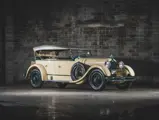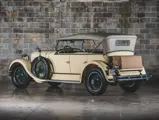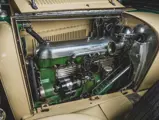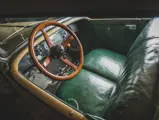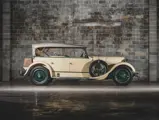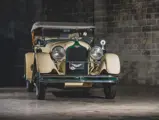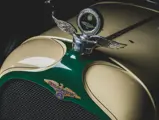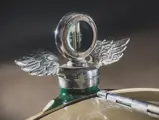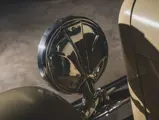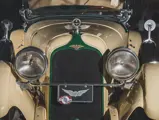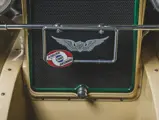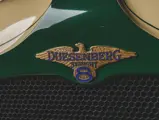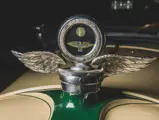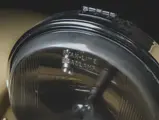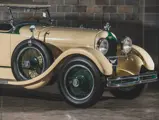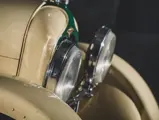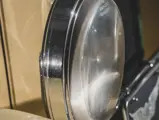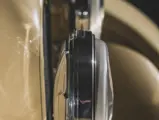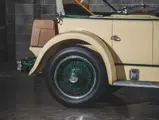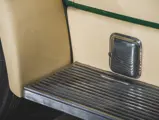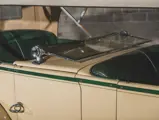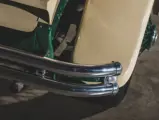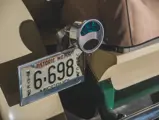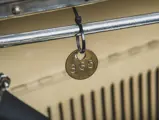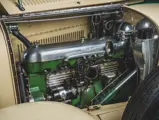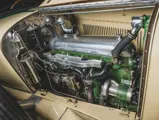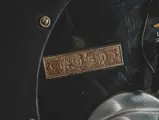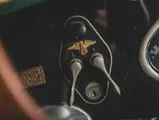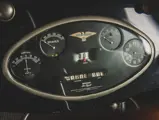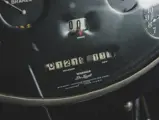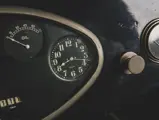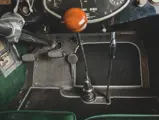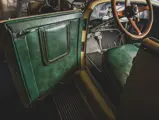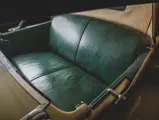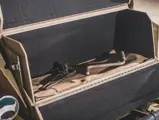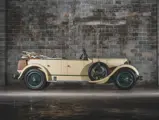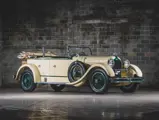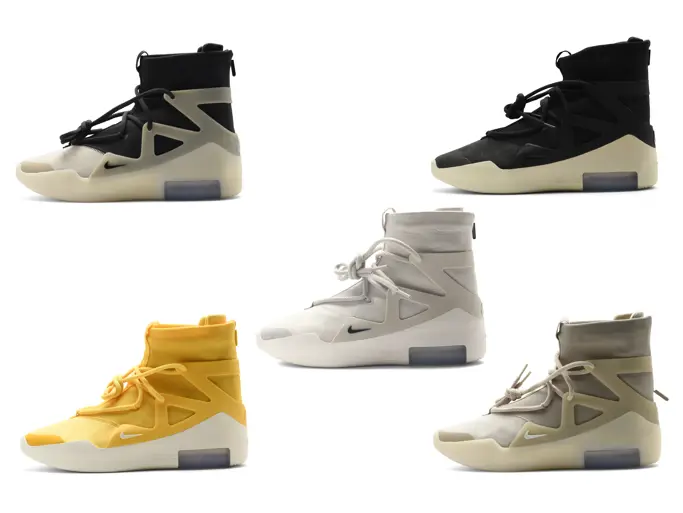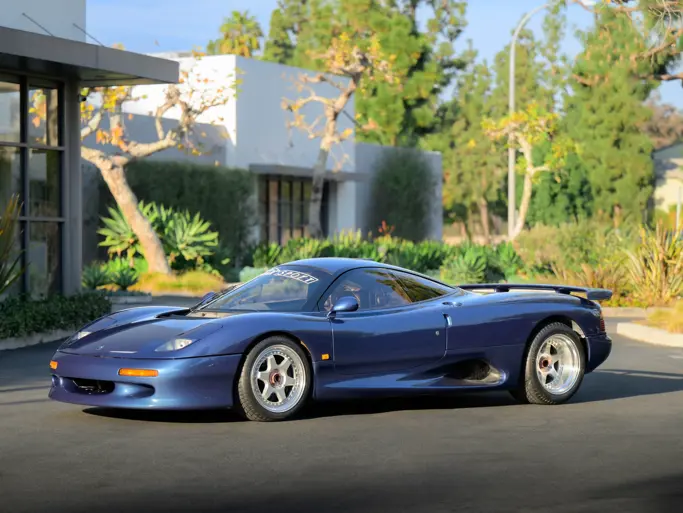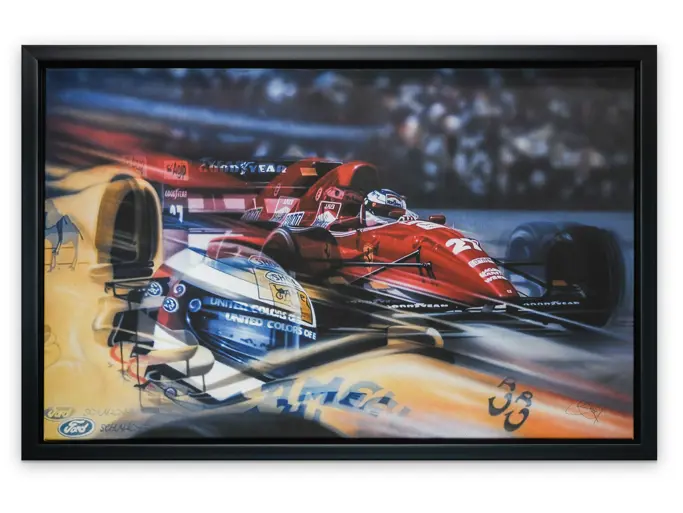The Guyton Collection
1927 Duesenberg Model X Dual-Cowl Phaeton by Locke
{{lr.item.text}}
$527,500 USD | Sold
 | St. Louis, Missouri
| St. Louis, Missouri
{{internetCurrentBid}}
{{internetTimeLeft}}

- The rarest production Duesenberg; one of four surviving Model Xs
- Believed to have been one of the 1927 Salon show cars
- Known history since new, including Wendell Chappelle and William F. Harrah
- Attractive older restoration by Harrah’s Automobile Collection
- Still affixed with its Harrah’s brass tag
- Auburn Cord Duesenberg (ACD) Club Certified (D-032)
- Classic Car Club of America (CCCA) Full Classic
THE DUESENBERG MODEL X
Rarest of the production Duesenbergs, the Model X was built in the last months of Duesenberg Motors’ independent life, as E.L. Cord took control and commanded the larger, grander Model J into production as its replacement. Perhaps because just 13 Model Xs were produced, and only four of them remain, the model remains somewhat misunderstood by collectors, who frequently write it off as “just another Model A.” That it is not; few components of the Model X are directly interchangeable with a Model A, as direct comparison of the two side-by-side will immediately indicate.
It is an overall larger car, with a wheelbase of 135 in., one inch longer than the Model A, and with tubular cross-members. The engine is an overhead cam inline eight-cylinder engine, of 322-cu. in. displacement, but with the generator and water pump relocated and all of the manifolds on the right side, and is more powerful, with an output of 100 bhp. It sends its power through a hypoid rear axle. In addition, the front springs were relocated on top of the front axle. Even the wheels on the Model X were changed, to 21-in. Buffalo units. Externally, the fenders were of a different, more deeply crowned design; the running boards were of cast aluminum; and thin-section Ryanlites were a popular lighting option.
THE LOCKE DUAL-COWL PHAETON
Duesenberg historians believe as many as four Model Xs were produced with versions of this dual-cowl phaeton body by Locke & Company, for appearances at the various Auto Salons held in major cities in 1927.
This car, the only survivor, was originally delivered to C. Walter Pratt, a wealthy paper mill owner in Carthage, New York, who was obviously impressed with it; he became one of the first customers for the successor Model J, acquiring a Murphy convertible coupe. It was eventually acquired from Mr. Pratt by Edward Sixbury, then passed to Wendell Chapelle, whose Empire State garage it shared with one of the Packard 1106 Twelve “boattail” runabouts.
Midway through a full restoration, the Model X was sold at Chappelle’s 1964 estate auction to the famed Harrah’s Automobile Collection. Finished beautifully by Harrah’s in Old Ivory and Painter’s Green, the hues described in literature for the original Salons, the car was one of the collection’s most famous automobiles, featured in numerous postcards and their 25th Anniversary roster. Reportedly, it was one of Bill Harrah’s favorite cars and he drove it regularly.
In 1987, it was part of a large group of Harrah’s cars acquired by the renowned collector, General William Lyon. Not long thereafter it was sold to Bud Tinney of California, then passed to Fred and David Weber, who at the time were amassing an impressive collection here in St. Louis. After being traded away by the Webers, it joined the vast Duesenberg stable of Ed Weaver in Dalton, Georgia.
They say that “the third time is the charm,” and it was true for Fred Guyton, who was finally able to acquire this car in 1996, after being outbid in two prior attempts. Correspondence on file indicates that he was thrilled to add the car to his collection, reveling in its companionship with his beloved Model A. He avidly contacted Duesenberg authorities, researching and documenting his acquisition, with letters in the file being from the late Fred Roe and Don Howell, among others.
Today the car’s Harrah restoration is well over 50 years old and shows patina throughout, with the lacquer paint exhibiting the usual wear and the interior in overall good condition; the engine compartment and chassis both show signs of careful use. It could be successfully shown at local events or become the rarest automobile on the next CARavan.
The Model X is the car without which no Duesenberg collection is complete, and with the last example trading hands publicly in 1996, the Locke dual-cowl phaeton’s offering here marks a generational opportunity. Fred Guyton had three chances; the next owner may not.

